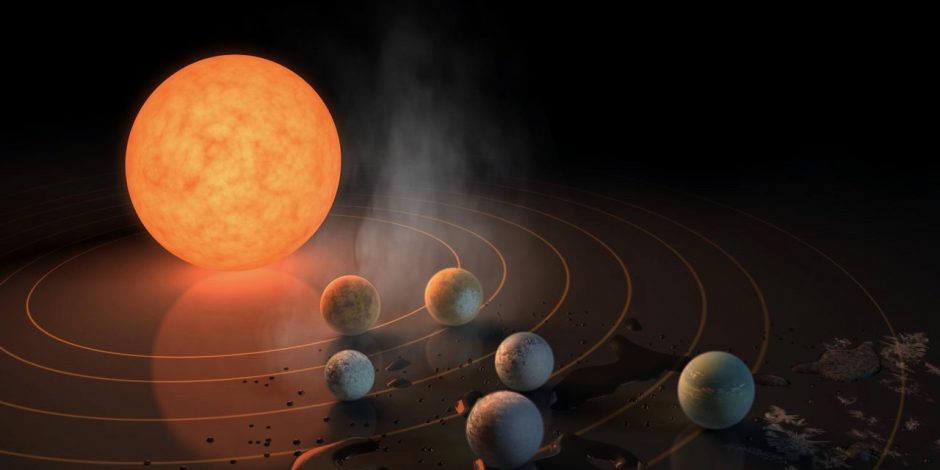Could the planets of Trappist-1 house life ?

PlanetS researchers observed Trappist-1 and its planets with the Hubble Space Telescope to find out if life was possible on one of them.
The habitable zone is the zone where the temperature at the surface of the planet which is there corresponds to that of the liquid water, indispensable to the appearance of life. The planet must neither be too far nor too close to its star in which case the water would only be ice or steam respectively.
Since the Trappist-1 system contains planets in the habitable zone of the star, members of the PRN PlanetS and the University of Geneva wanted to know whether the radiation of the star could evaporate the water that would be possibly present on one of the planets.
The seven planets of Trappist-1, sizes and distances are to scale
For this they used the Hubble space telescope which allows to observe the ultraviolet radiation emitted by the star. UV radiation can, if it is intense enough, break the molecules of water in hydrogen and oxygen. Lighter than air, hydrogen can then escape from the atmosphere of the exoplanet and becomes detectable by Hubble.
According Vincent Bourrier, the first author of the paper, the two planets closest to the star should lose their atmosphere 1 to 3 billion years after their formation, a duration certainly too short for life to appear. On the other hand, other planets, especially those in the habitable zone, may conserve their atmospheres much longer, if they have one, and perhaps offer favorable conditions for the emergence of life.

The dome of the telescope Trappist at La Silla
The paper published in A&A:
http://www.aanda.org/articles/aa/full_html/2017/03/aa30238-16/aa30238-16.html
Categories: News
